San Diego, CA Pollen and Allergy Report for Summer 2023
Pollen Allergy Trends in San Diego, CA
When is pollen lowest in San Diego, CA?

February
Lowest month total PPM
Avg. PPM
When is pollen highest in San Diego, CA?

March
Highest month total PPM
Avg. PPM
How does pollen in San Diego, CA compare to California?
San Diego has a higher average PPM than the state of California.
San Diego yearly avg PPM:
California yearly avg PPM:
How does pollen in San Diego, CA compare to the USA?
San Diego has a lower average PPM than the USA.
San Diego yearly avg PPM:
USA yearly avg PPM:
Is pollen worse this year in San Diego, CA?
Spring 2023 was worse than spring 2022.
Spring 2023 PPM:
Spring 2022 PPM:
Average PPM in San Diego, CA
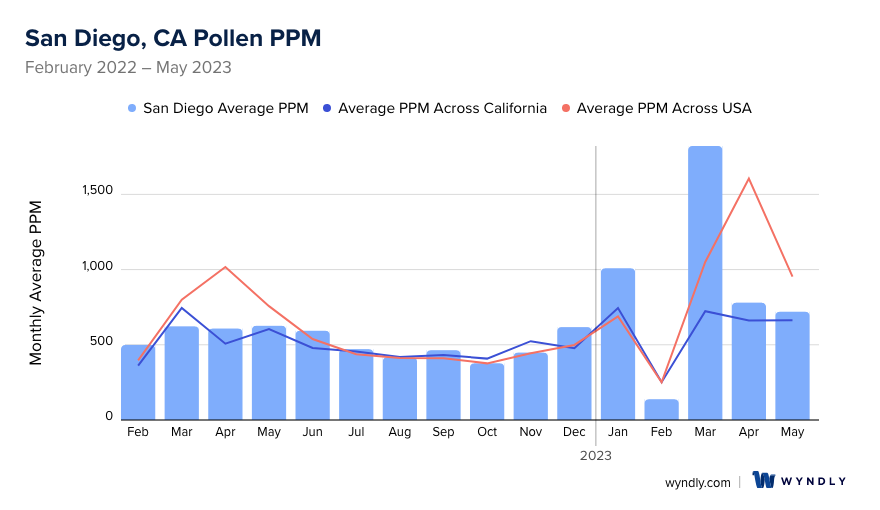
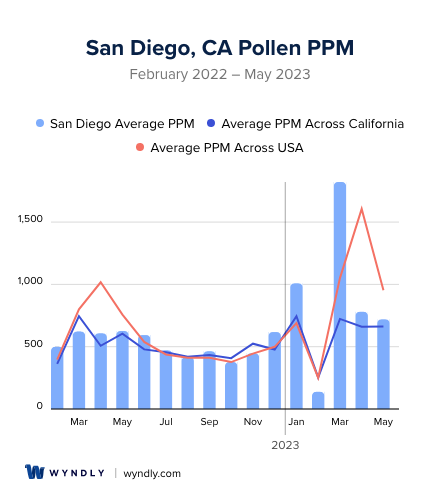
San Diego, CA Pollen and Allergy Breakdown by Month
Grass
When is grass pollen highest in San Diego, CA?
March has the highest grass pollen in San Diego, CA with an average PPM of
When is grass pollen lowest in San Diego, CA?
December has the lowest grass pollen in San Diego, CA with an average PPM of
Tree
When is tree pollen highest in San Diego, CA?
March has the highest tree pollen in San Diego, CA with an average PPM of
When is tree pollen lowest in San Diego, CA?
September has the lowest tree pollen in San Diego, CA with an average PPM of
Weed
When is weed pollen highest in San Diego, CA?
June has the highest weed pollen in San Diego, CA with an average PPM of
When is weed pollen lowest in San Diego, CA?
February has the lowest weed pollen in San Diego, CA with an average PPM of
San Diego, CA Pollen Monthly Breakdown by Pollen Type
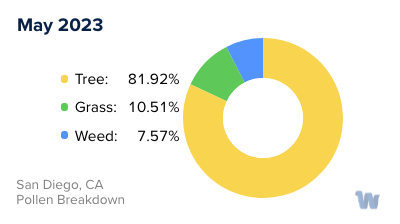
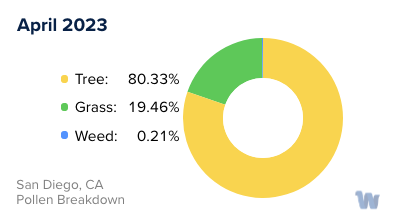
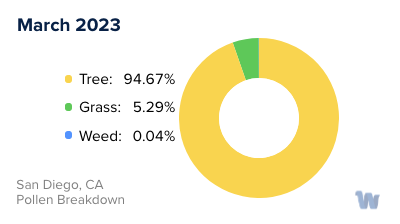
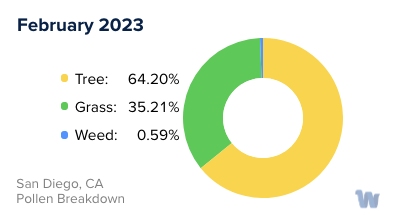
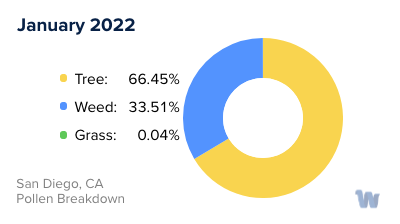
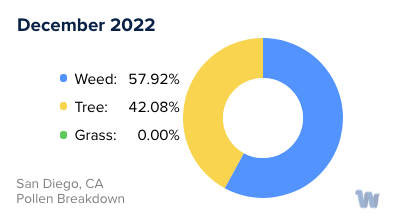
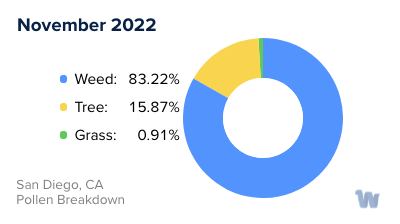
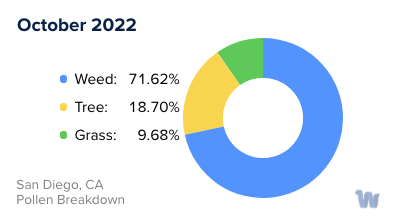
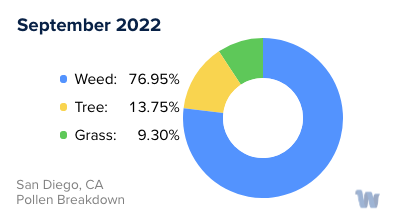
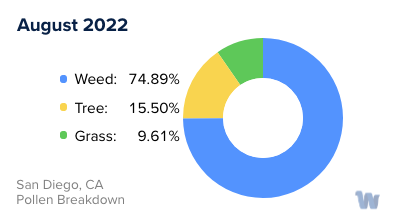
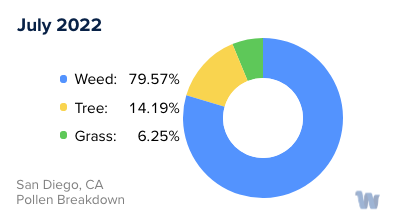
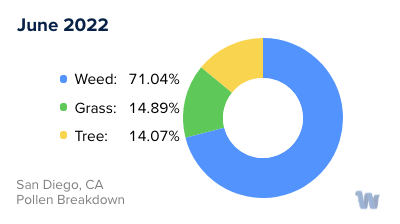
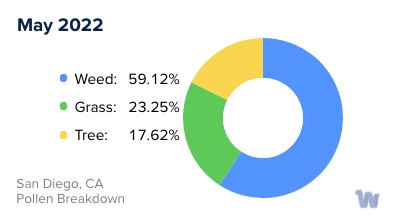
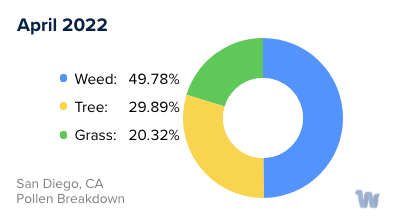
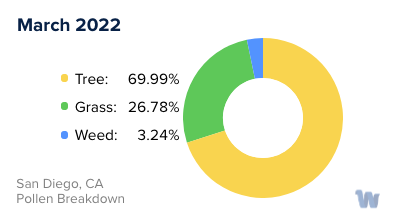
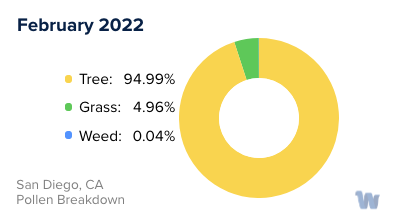
Pollen and Hay Fever in San Diego, CA
Nestled in the golden state of California, San Diego is a city that balances stunning natural landscapes with urban vibrancy. However, residents and visitors alike are no strangers to a common environmental issue: pollen allergies. This condition, also referred to as hay fever, affects many individuals throughout the year, with the severity of symptoms often fluctuating based on the season and the types of pollen present in the environment.
The most common types of pollen that trigger allergies in San Diego come from grasses, trees, and weeds. Grasses such as Bermuda grass, ryegrass, and Kentucky bluegrass bloom in late spring and early summer, releasing microscopic grains of pollen into the air. These can travel for miles, carried by the wind, finding their way into the noses and throats of those with sensitivities, provoking an allergic reaction.
Trees are another significant source of allergens, with the primary culprits in San Diego being oak, olive, and pine trees. These trees typically release their pollen in the spring. In particular, the olive trees, a common sight in the city's landscapes, are known to create clouds of pollen that can turn the air hazy.
Weeds, while less prevalent than grasses and trees, can also contribute to the pollen count. Common ragweed, sagebrush, and Russian thistle tend to release their pollen in late summer and fall, rounding out the annual cycle of airborne allergens.
The various seasons in San Diego, while generally mild and sunny, each come with their unique mix of allergenic pollens. Spring is dominated by tree pollen, summer by grass pollen, and late summer into fall by weed pollen. However, due to San Diego's temperate climate, some types of pollen can be present year-round, making hay fever a perennial concern for those susceptible.
Understanding the cycles of these allergenic plants and their pollen can help individuals anticipate and manage their symptoms. Though there's no cure for pollen allergies, knowledge of what's in the air can empower those affected to take control of their lives and enjoy all that San Diego has to offer.


